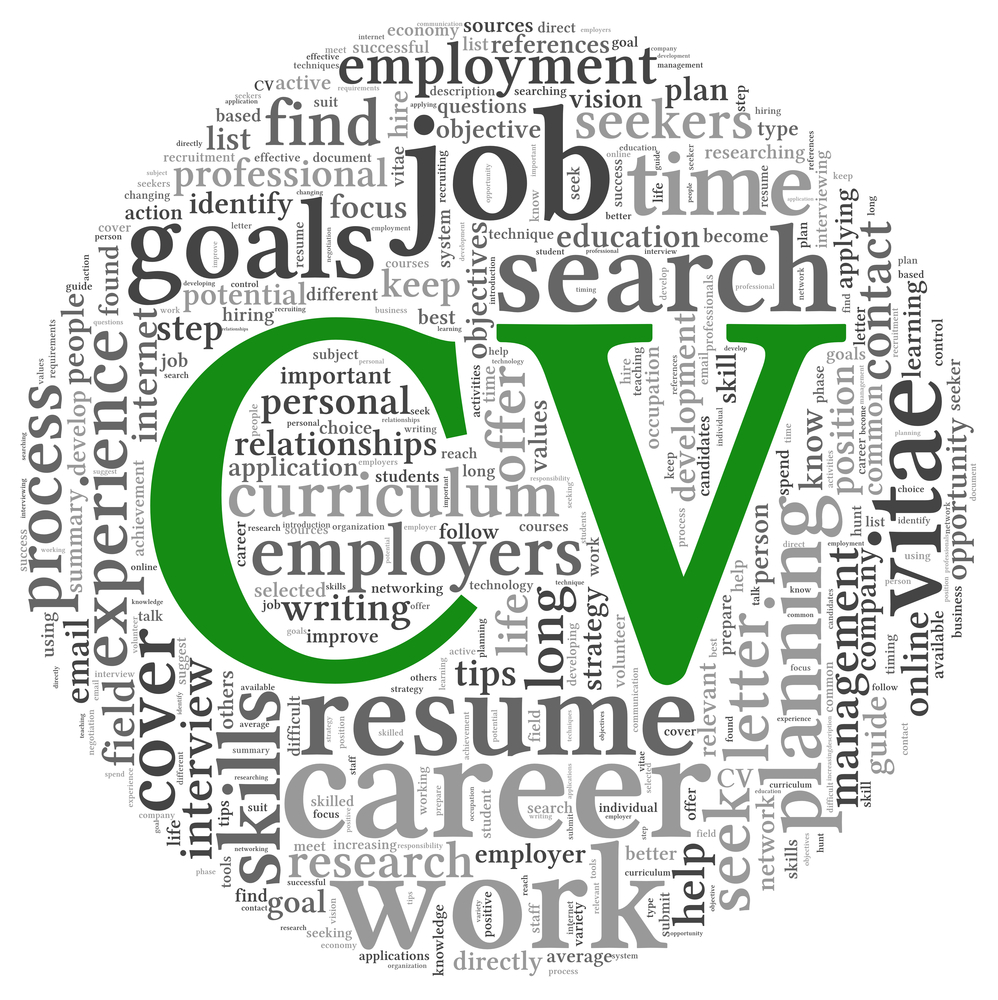Top tips for how to write a CV
As someone who looks at a lot of CVs on a daily basis, I am still surprised by how many people send a poor CV out into the world to represent them. Given the competitive nature of the market you want to ensure you are putting your best foot forward and give yourself the best chance of securing an interview! So here are some pointers on how to create a competitive CV.
Which format to use
There are a myriad of CVs formats, most of which are downloadable and a similar number of schools of thought about whether you should keep it traditional or try to do something to stand out. This very much depends on the industry you are applying for. In creative or media roles, your CV is likely to showcase your design/digital skills and so there is room to be more radical. For other industries, the safest option is to stick to a traditional format with the aim being to give the reader the clearest understanding of your career to date. I fully confess to being a ‘CV classicist’ and don’t tend to be swayed by aesthetics or graphics. More and more technology is being utilised to screen applicants including AI, so ensuring your CV contains the keywords related to your job function is important. This will help ensure you are “selected” for having the right experience.
Beware the over-formatted CV
The other issue is the over-formatted CV. By this I mean one which has text in boxes and columns, numerous font types and sizes and an exaggerated use of bullet points. You may think this looks more ‘impactful’ however be aware that when CVs are added to a database, heavy formatting is often lost in the process. The answer to this is to PDF your CV however this can also cause issues if a company’s application tracking system cannot ‘read’ the CV and also means that the CV cannot be corrected if a mistake is spotted.
By laying out your CV clearly and with sensible use of bold and bullet points, you should still be able to create a CV which is easy on the eye and will look the same to the reader as it does to you. This will arguably focus the readers attention on the content and not on the formatting.
How long?
In the world of CVs this is the million-dollar question. People are given so much conflicting advice “it must fit onto one page” (even if you are a Managing Director?!) or conversely, it should contain detail on every role you have held (even if it runs to 5 pages?!).
In reality it is about common sense. If you are beginning your career, you may well struggle to fill more than one page however if you include all relevant information (Education, Qualifications, Interests etc.) you should be able to stretch to a page and a half. Equally, if you are a senior candidate with many years of experience, it can be very hard to condense it down without losing some really valuable content.
As a general rule, a well-written CV should fill 3 pages and only go beyond this if you are at a very senior level. If you are at a senior level and have a CV of two pages, I might well be selling yourself short.
The key is to keep flowery prose to a minimum, use clever formatting (font size, narrow margins etc.) and be economical with your language without missing any salient points. Also, and this is just a little niggle on my part; it isn’t really necessary to have the words Curriculum Vitae at the top of the page. Your name will suffice and this will save you a valuable line of text!
Likewise, if you are short on space, don’t feel the need to write a long paragraph about your personal interests. One line is fine to give someone a flavour of your interests outside work.
Which order?
Absolutely the first thing that any recruiter (agency or in-house) will want to know is who you work for and what you do. Of course they will take note of other details but, for people who have to speed read hundreds of CVs a week, this is the salient point. Your CV therefore, should always be written in reverse chronological order. That is, your current or most recent role should appear at the top and descend backwards in time as the readers progresses down the page. The fact that you started your career as a paperboy has little relevance to your application*** (***unless you are a school leaver or recent grad whereby any work experience has merit). Also, please don’t use Work Experience as a heading for this section. This is your Career History* (*unless you are a school leaver or grad in which case that may be the best description).
Contact details
There is a worrying trend in the CV world of people not including their contact details. I won’t go on about this. Suffice to say that if you don’t include your telephone number, you are unlikely to receive a call inviting you to interview! Ideally, you should include your email address, your home town or postcode and of course the correct mobile number. You need to be as accessible as possible and it is important that the reader knows where you live. On this point, if you are able to relocate, please make this clear. For obvious reasons, avoid using a work email address or number.
Content is king
Of course, layout and format is nothing without decent content. The challenge is striking a balance between providing enough detail and being overly verbose. The key is to be as specific as possible. If you list your achievements, ensure that you provide evidence. For example, it is not enough to say that you significantly increased sales. You need to say by how much and what you implemented to achieve this result. Ideally, you should provide enough detail to spark interest in the reader and hopefully you will get the chance to elaborate at interview stage.
It is important that you give the reader a clear idea of your remit. For instance, if you are an Area Manager how many stores are you looking after or a buyer, what is the turnover of your category. Giving an idea of turnover, people responsibility and reporting structure also gives the reader an insight into the scope of your role and how much accountability you really have.
Education and Qualifications
Unless you are a school leaver or recent grad, there is no need to list each subject you studied at school or the grade you achieved. You should still include, however, your place of education and a summary of the qualifications you achieved. For example: 8 GCSE’s at grade C or above.
Education should be listed in reverse chronological order starting with your highest qualification. I have seen numerous cases recently of people who have a degree burying it below their school information, or omitting it completely. If you have a degree, please ensure that it is clear to the reader. Some employers insist that candidates are degree educated so this could be the difference between you being asked to attend an interview or not.
The cardinal sin
Once written, you should check your CV for spelling and grammar. You should then check it again, use your spellcheck and get someone else to proof read it for you. I cannot stress how important this is.
Despite the advances in technology, the ‘paper’ CVs are here to stay for the immediate future so it’s important to get it right!


